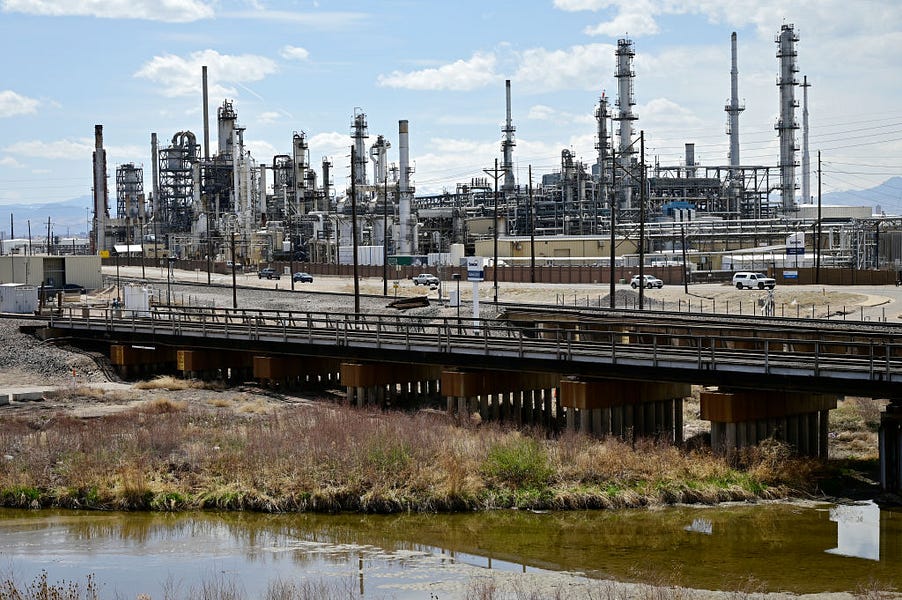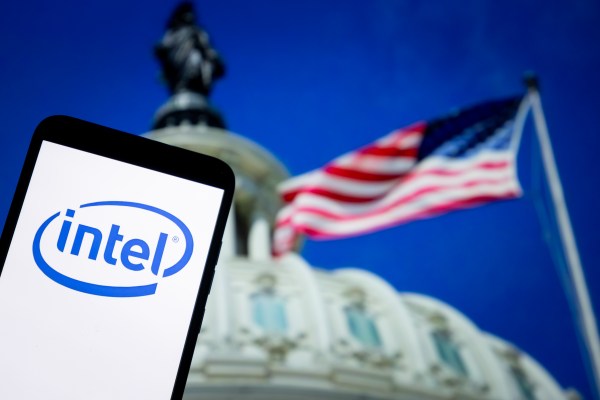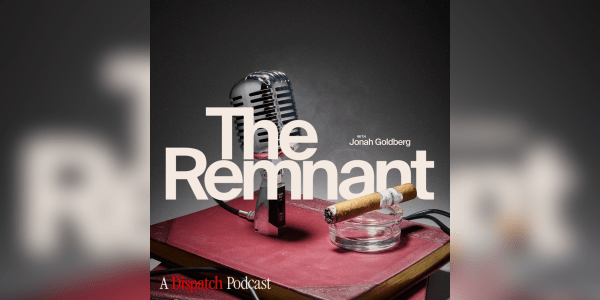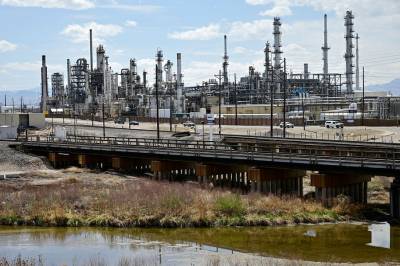When President Joe Biden started bragging about declining gasoline prices, he was giving a hostage to fate. Now gasoline prices are inching upward, and things are looking grim for the hostage.
After falling for 99 days, gasoline prices rose a bit on Wednesday. Don’t read too much into that. Futures markets suggest that the near-term trend for gasoline prices probably will be downward, but the commodity is volatile. The only people who bet on it are fools and professional energy traders—the two categories are not mutually exclusive, but President Biden doesn’t have a lot of energy traders on the political team.
“Our economy had zero percent inflation in the month of July—zero percent,” Biden boasted only a few weeks ago. “Here’s what that means. While the price of some things went up last month, the price of other things went down by the same amount. The result, zero inflation last month.”
In reality, the prices of most of what Americans buy went up, and the inflation reduction was almost entirely the result of lower energy prices—“core” inflation, a measure that excludes the sometimes wild swings of food and energy prices, continued to persist at a punishing 8.5 percent.
Even if that hadn’t been the case, Biden’s argument would have been a pretty weak one: Real wages—meaning wages adjusted for inflation—have been declining steeply during his presidency, continuing the marked downward trend that began before he was elected, in the second quarter of 2020. That is entirely from inflation: “Nominal” wages – the number on the paycheck – have grown a little, but prices have gone up faster. The Washington parlor game of trying to correlate presidential inauguration dates or bill signings with changes in big economic trends is superstitious foolishness—complex, modern economies don’t work that way—but nobody held a gun to the president’s head and told him that he had to pretend that near-term changes in inflation are a judgment on him and his policies. If he is going to insist on playing that game, then the outcome that matters most is Americans’ wages relative to prices—and that arrow is pointing in the wrong direction. Most Americans think CPI is a new spinoff from a crime-drama franchise on CBS, but they know how much paycheck they have left over once the bills are paid and the groceries are bought.
That’s a problem for Biden. He never has figured out how to talk about gasoline prices, in part because of internal Democratic factional friction—Biden’s lunch-bucket blue-collar pretensions run up against the environmental priorities of influential Democrats who hope eventually to stop gasoline consumption altogether—and in part because he is the intellectually lazy figurehead of an intellectually lazy administration.
The last time gasoline prices rose steeply, Biden resorted to cheap demagoguery, castigating gasoline retailers as price gougers. The sign outside may say “Exxon” or “Texaco,” but oil companies haven’t owned any meaningful number of gas stations in years, and most gasoline retailers are family-owned businesses with a single location. Typically, they don’t make very much money from selling gasoline, as their margins are made inside the store selling soda, cigarettes, lottery tickets, and more. And they don’t necessarily make more money when prices are higher. They buy as much gasoline as they sell, and retail gasoline prices are driven in no small part by wholesale gasoline prices, which in turn respond to the global crude-oil markets. There must be an economist wandering around the White House somewhere who could explain to the president that the highest price and the profit-maximizing price are rarely the same price.
If prices rise this winter, expect a return to that kind of ugly politics: insufferable preening when the news is good and ignorant blame-casting when the news is bad. Biden’s many marked similarities to his predecessor are a reminder that populism is populism, irrespective of the label on the packaging.
There probably isn’t very much the Biden administration can do, or that any administration could do, about gasoline prices in the near term. But there is a great deal that policymakers could do to create a more reliable and efficient energy industry in the United States. And while everybody is talking about price today, we should be talking about reliability and security.
The worldwide energy markets are efficient and frictionless as far as trading securities goes, and that is important. Yet the business of actually delivering fuel to customers operates under significant physical constraints. We could give our European friends promissory notes for fuel to keep them warm this winter. But, as Europe is starting to appreciate, there are only so many pipelines with so much capacity, limited facilities for unloading and re-gasifying liquified natural gas, and other real-world limitations. We’ve seen that, usually in a less dramatic way, in the United States, too: When Hurricane Harvey dumped all that rain on Houston and points south in 2017, the resulting closure of several refineries and pipelines not only sent gasoline prices higher but forced many retailers to shut their pumps down for want of product. Energy lawyers and oil-and-gas financiers in Dallas were safe from the storm, but they couldn’t fill up their Range Rovers. The ransomware attack on the Colonial pipeline system in 2021 resulted in a formal state of emergency in 17 states and the District of Columbia. Vladimir Putin’s energy war on the European Union seems to have at least slightly roused Brussels and Berlin, but Washington seems almost entirely blind to similarly serious U.S. vulnerabilities.
The complexity of producing, refining, and distributing petroleum fuels leads to some counterintuitive results. Mexico is a major oil producer, but it is highly dependent on gasoline imported from the United States. (About half of U.S. refinery exports go to Latin America, with Mexico being by far the largest single destination.) Saudi Arabia imports fuel oil from Russia. Iran imports diesel and, until only a few years ago, most of its gasoline. The United States, the world’s largest petroleum producer and a major petroleum exporter, imports ... oil. Lots of it.
Oil isn’t homogeneous. Many U.S. refineries are optimized for the kind of oil we have imported for years rather than for the kind of oil produced here. Sometimes, oil imported from Canada or Mexico is simply more convenient for U.S. refineries. We also import refined petroleum products, ranging from home-heating oil to gasoline and diesel. We have even seen the occasional boatload of LNG from the Russian arctic make its way to New England, because we don’t have enough pipeline capacity to pump Pennsylvania gas to Massachusetts when demand peaks.
If U.S. refineries and wholesalers were cut off from those imports, it would not be cheap or easy—or quick—to replace them. That isn’t a case for energy autarky, but it is a case for encouraging the development of a more robust, diversified, and secure domestic energy industry, particularly when it comes to pipelines and other distribution modes—that “infrastructure” that presidents are always talking about.
That’s the conversation Americans should be having. Instead, we’ll probably spend the winter talking about whether a 60-cent swing in the price of high-octane represents a catastrophic failure of the national priest-king to properly propitiate the economy god.







Please note that we at The Dispatch hold ourselves, our work, and our commenters to a higher standard than other places on the internet. We welcome comments that foster genuine debate or discussion—including comments critical of us or our work—but responses that include ad hominem attacks on fellow Dispatch members or are intended to stoke fear and anger may be moderated.
With your membership, you only have the ability to comment on The Morning Dispatch articles. Consider upgrading to join the conversation everywhere.